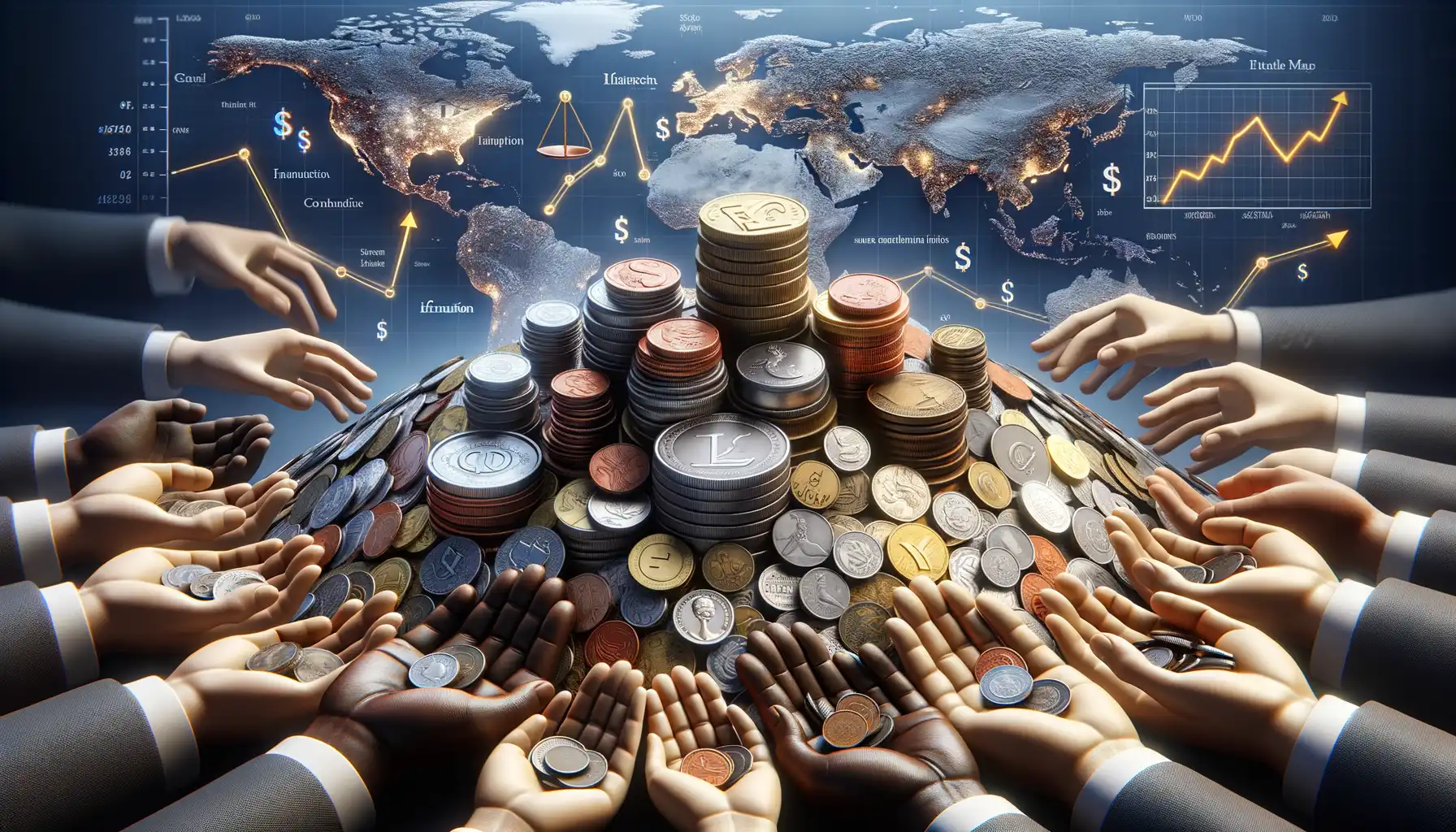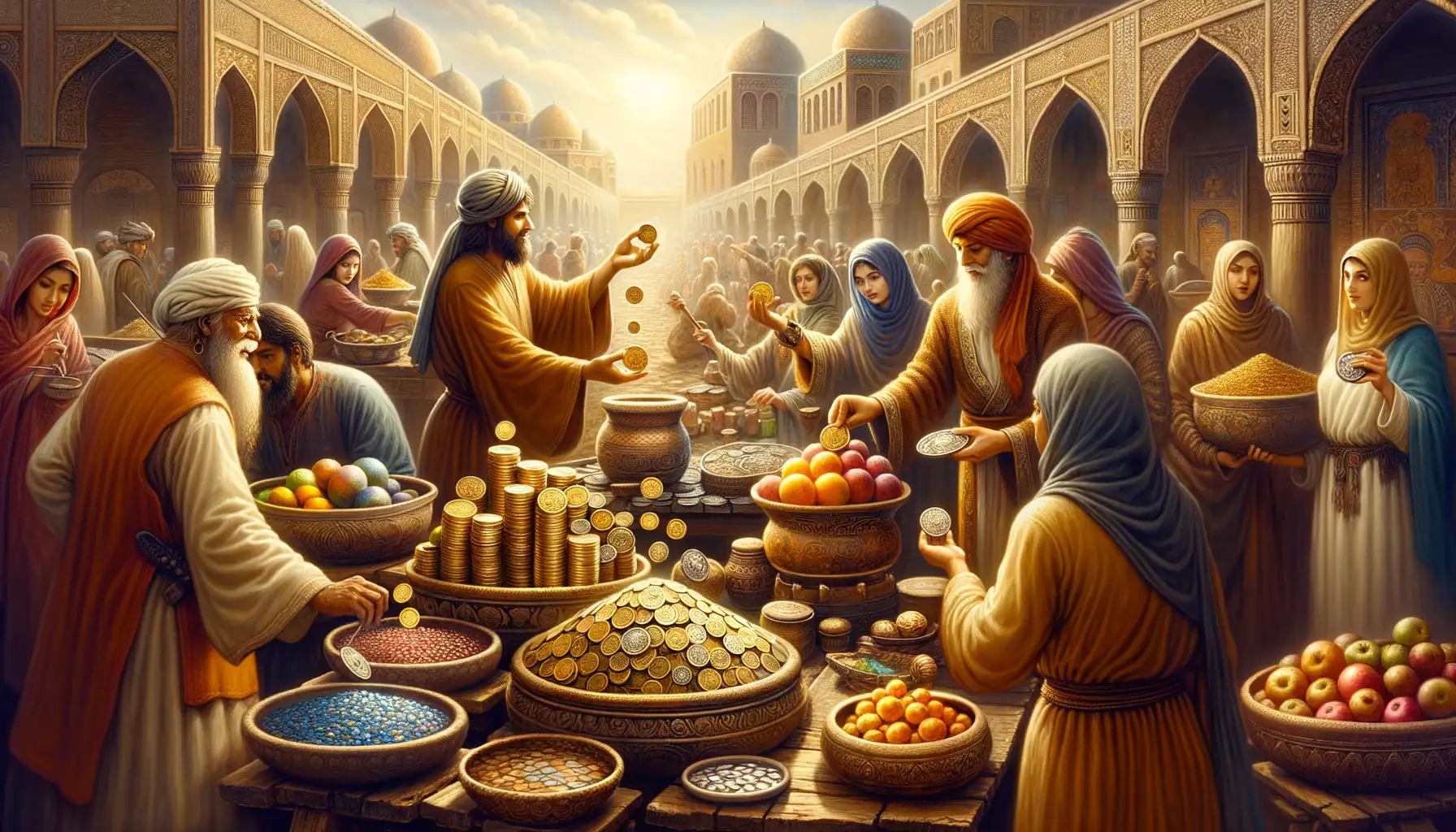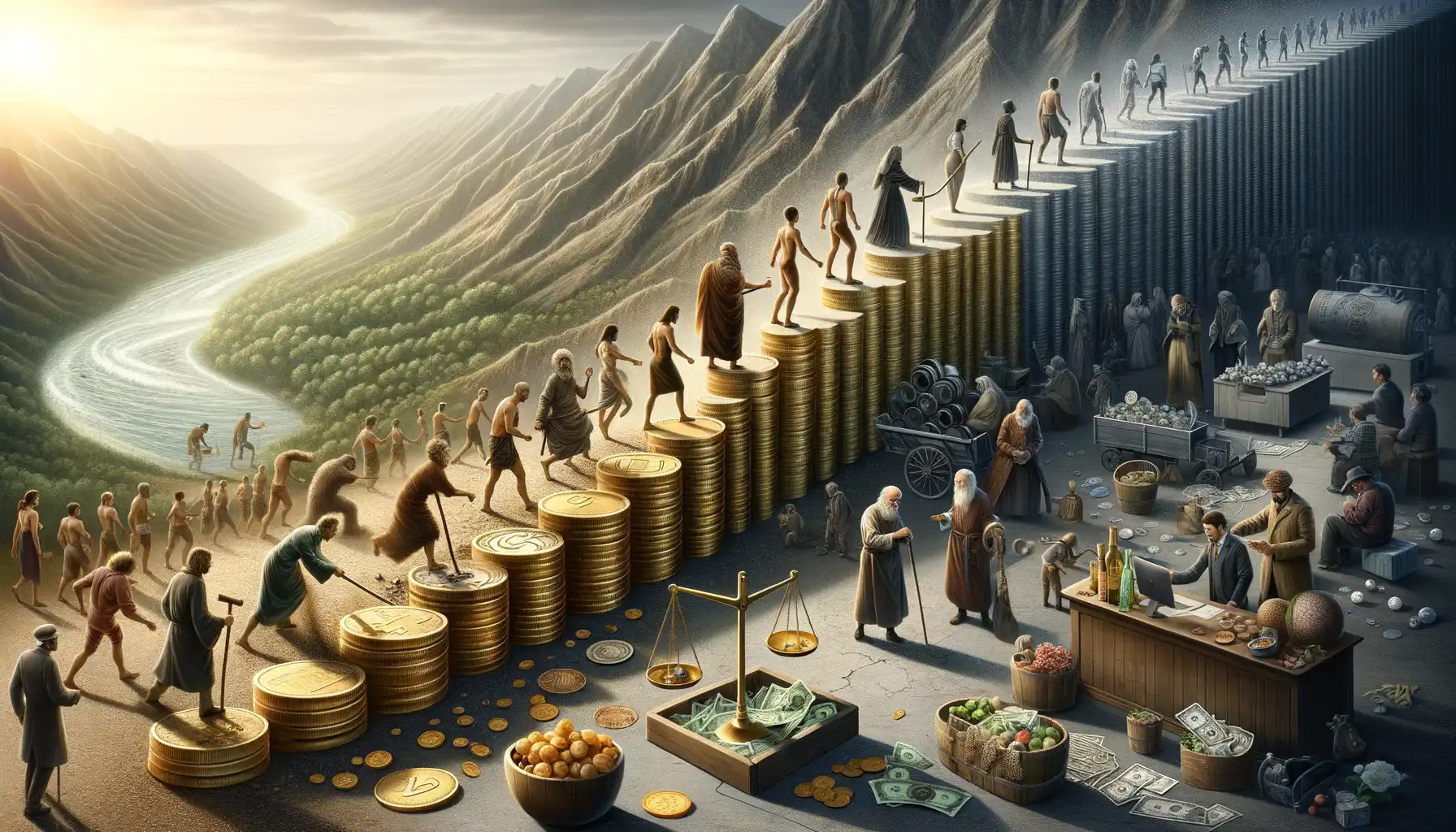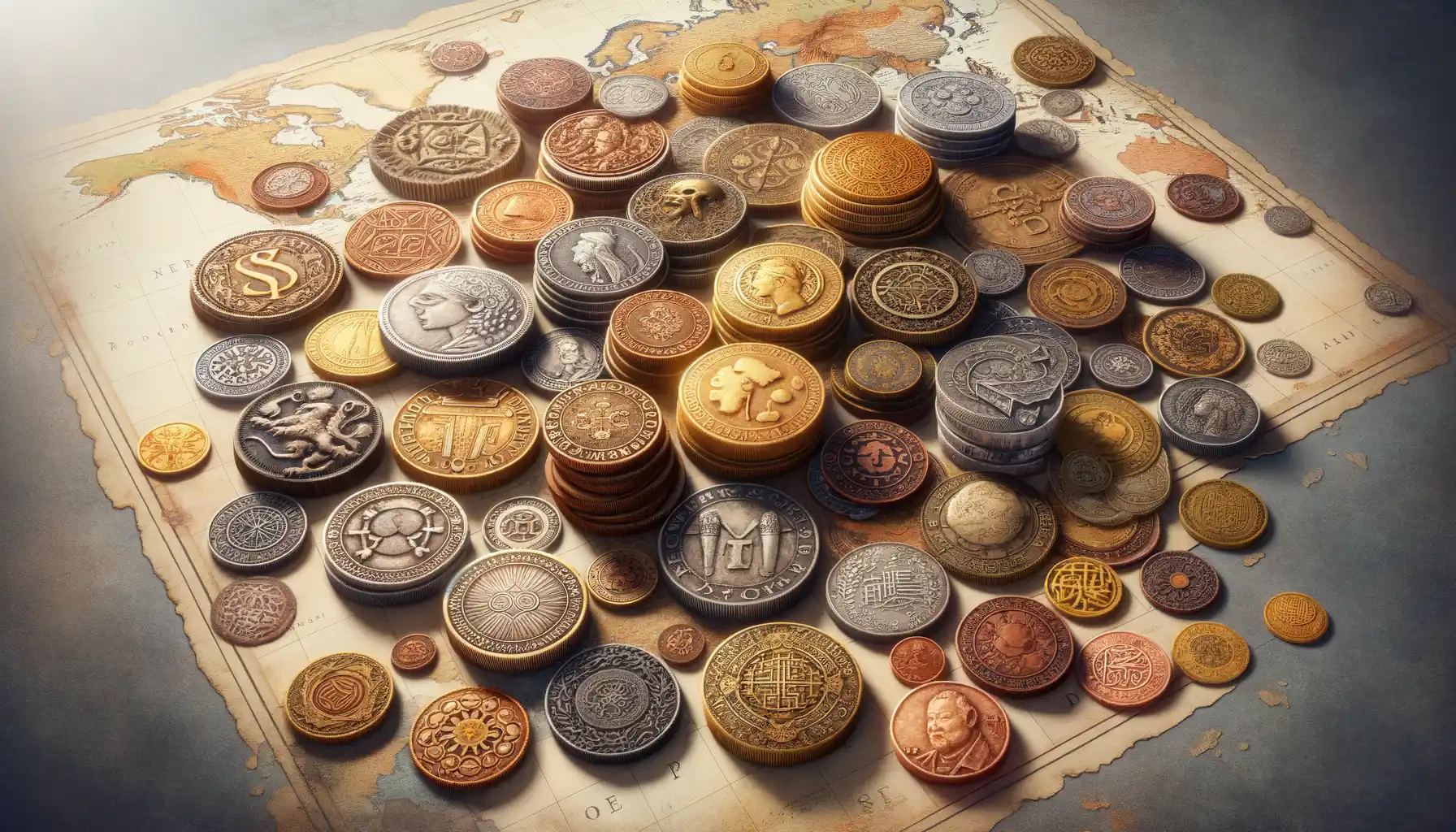Historical Evolution of Coinage
The Spark of Human Ingenuity: Birth of the First Coins
Picture this: thousands of years ago, trade was a chaotic dance of bartering. One goat for three sacks of grain? Fair enough—but what if your customer didn’t need a goat? Enter the genius of coinage, a revolutionary idea born in the ancient kingdom of Lydia, around 600 BCE. These first coins, made of shining electrum (a natural blend of gold and silver), were more than just shiny trinkets. They were trust stamped in metal, a promise that their value would hold, no bartering required.
From there, civilizations caught on like wildfire! The Greeks perfected beautifully intricate coins to showcase their gods and heroes, turning money into art. The Romans? They took it further, plastering the faces of emperors on coins as a daily reminder of power and unity. Every coin whispered a story—not just of value, but of identity and ambition.
- Lydia’s electrum coins: Simple yet brilliant. The dawn of fixed value in trade.
- Greek and Roman mastery: Coins became statements of culture, authority, and meticulous craftsmanship.
When Metal Met Market: Expanding the Reach
As these metal marvels spread across continents, they transformed not just economies but entire ways of life. China innovated too, introducing bronze coins with square holes for easy stringing—practical and ingenious. Meanwhile, in India, punch-marked coins carried the touch of merchants and rulers alike, a mix of enterprise and governance. They weren’t just currency; they were connectors.
Think about it: how many hands does a coin pass through in its lifetime? Each one—a merchant, a farmer, a traveler—added to its legacy. By standardizing trade with an agreed medium, coins laid the foundation for markets as we know them today. Each era, each empire, left its fingerprint on this global language of exchange, proving that a simple piece of metal could shape the heartbeat of societies.
Economic Implications of Metal Money

The Ripple Effect of Precious Metals in Currency
When societies began trading with coins crafted from metals like gold, silver, and copper, the financial world transformed. These shiny discs weren’t just tools of exchange – they were statements of value, trust, and economic power. Picture this: centuries ago, a handful of gleaming coins could buy you a horse, a feast, or even someone’s loyalty. But why did these chunks of metal carry such weight (figuratively and literally)?
For starters, coins introduced the idea of **standardized value**, which made trade predictable and fair. No more haggling over how many chickens equaled a goat. Next, their durability made them reliable; a silver coin didn’t rot like grain or spoil like wine. But the magic really unfolded when societies started using *precious metals as a universal language of wealth*.
- **Wealth Storage:** Metal coins gave people a tangible way to save and accumulate wealth. A stash of gold under the floorbeat barter goods any day!
- **Resource Redistribution:** Empires minted coins from conquered lands’ riches, spreading wealth (or debt) across continents.
But here’s the twist: by tying currency to metal, economies became entangled with mining fortunes and geological luck. What’s the real cost of “striking gold”?
Role of Coinage in Trade and Market Development

From Barter to Bronze: A Game-Changer for Traders
Before the advent of coins, trade was an exhausting balancing act. Imagine trying to exchange a sack of grain for a goat, only to argue endlessly about their “equal value.” Enter coins—small, portable, and packed with agreed-upon worth. Suddenly, transactions weren’t just easier; they became smoother than freshly minted silver.
With standardized coinage, markets flourished like never before. Sellers didn’t need to haggle over abstract values anymore. Buyers could carry wealth in their pockets without lugging around awkward trade goods. Coins created a common language—a universal “yes” that transcended borders and cultures.
- Merchants traveling vast distances no longer relied on trust alone—they had tangible proof of value in their purses.
- Local markets gained momentum, attracting more buyers and sellers eager to deal in reliable currency.
- Trade routes expanded as certainty replaced uncertainty in economic exchanges.
The Ripple Effect on Market Growth
Coins weren’t just tools for trade; they were catalysts for dreams. Picture bustling bazaars, full of vibrant stalls where every jingle of a coin signaled opportunity. This was the magic of metal money! With predictable value, traders took risks, artisans thrived, and entire industries emerged.
Beyond local markets, coins fueled regional and international commerce. Empires like Rome stamped their coins with pride, ensuring their currency was recognized across continents. It wasn’t merely about buying and selling anymore—it was about building networks of trust, efficiency, and prosperity. Coins didn’t just move goods; they moved people toward innovation and collaboration.
Transition to Modern Monetary Systems

The Leap from Coins to a New Era
Imagine holding a weathered coin in your hand—its edges smoothed by countless exchanges, its weight a quiet testament to centuries of use. Now, fast-forward to today, where money often isn’t something you can touch at all. The transition from tangible metal coins to the abstract world of modern monetary systems feels like leaping from the artist’s brushstroke to the pixelated precision of Photoshop. It’s not just evolution; it’s reinvention.
This shift wasn’t merely technological—it was psychological too. Coins, the jingling heart of trade, carried a sense of security. They were physical proof of value. But over time, society began to embrace the invisible: paper money, bank accounts, electronic funds. People traded the certainty of heft for the convenience of speed.
- Fiat currency: Money untethered from gold or silver, relying solely on trust and government backing.
- Digital payments: The rise of bank cards, online platforms, and cryptocurrency.
The change wasn’t always smooth. Picture early adopters of paper money met with suspicion—“What do you mean this paper is worth a cow?” Yet, these innovations unlocked entire economies, propelling us into an era of unprecedented global connectivity. Who could go back now?
Cultural and Political Influence of Coinage

Coins as Symbols of Power and Prestige
If coins could speak, oh the stories they’d tell! Beyond their shiny surfaces and monetary value, coins have long been a mirror of a society’s aspirations and authority. Take the ancient Roman Empire, for example: emperors like Augustus stamped their faces onto coins, not just to say “I’m in charge,” but to broadcast messages of strength and divine favor. Each coin was a miniature billboard, spreading political propaganda faster than any courier could run.
But it wasn’t just for rulers—entire cultures made statements through their currency. Consider the intricate designs of the ancient Greek drachma, often adorned with gods, goddesses, or heroic myths. These coins weren’t just tools of trade; they were tangible representations of values, beliefs, and national pride. The artistry captured on a single coin had the power to unite people across city-states, binding them with shared stories.
How Coinage Shapes Cultural Identity
Coins are, in many ways, time capsules. They offer us glimpses into what mattered most to the people of an era. Imagine holding a medieval Islamic dinar inscribed with flowing Arabic script—it’s not just money but also a celebration of calligraphy and faith. Here are some fascinating elements that coins have symbolized throughout history:
- Religious devotion: Think of Christian crosses on European coins or Buddhist symbols in ancient Indian currency.
- Technological achievements: New minting techniques often showcased a civilization’s advancements.
- Political bonds: Coins issued during alliances bore dual emblems, signaling unity between rulers or nations.
Even today, when you glance at your pocket change, there’s more there than meets the eye. National symbols engraved on modern coins, like eagles, monarchs, or historical landmarks, continue to link citizens to their shared heritage.